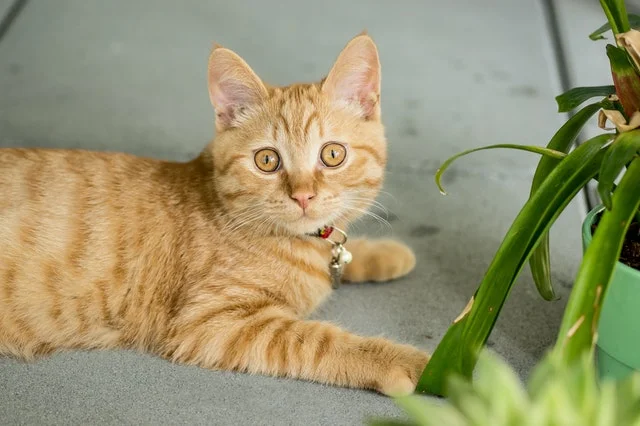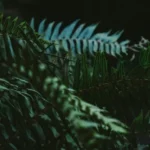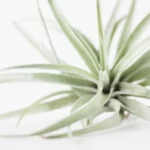Table of Contents
The Snake Plant Cats Find Toxic
The snake plant is native to West Africa between the areas of eastern Nigeria to the Congo. It is known by several names including, viper’s bowstring hemp and mother-in-law’s tongue.
This particular type of plant is one of the easiest houseplants to care for. However, there are some concerns regarding this snake plant cats find toxic.
Felines are known to chew on plants. With the snake plant, cats are no different, but this depends on the feline in question. When these cute creatures do come in contact with the foliage, the crucial aspect is knowing what to do and what to expect.
What makes a snake plant poisonous to cats?
There are toxic substances found in the juice of the snake plant cats tend to have an allergic reaction to.
These toxins, called saponins, are natural insecticides that protect them from various pests that might otherwise feed on the leaves and cause damage to the foliage.
Saponins are found in all parts of the plant. Therefore, with contact or consumption of any part of the snake plant, cats could develop symptoms of poisoning.
Will a snake plant kill my cat?
The chance of the houseplant killing a cat because of its toxins is very small. While the juices are poisonous in the snake plant, cats are often able to tolerate this low-level toxin.
Any feline should be still be taken to the veterinarian if they have had contact with the foliage. Simple skin or fur contact with the plant may cause slight irritation or swelling. There are additional consequences if the feline chews or ingests the foliage.
After having consumed a snake plant, cats may show some or all of the following symptoms:
- Abdominal pain
- Excessive drooling (may be caused by nausea)
- Nausea
- Vomiting
- Diarrhea
- Swelling of the mouth, tongue, and lips
- Loss of appetite
- Depression
It is recommended that if a cat is showing these symptoms, to check for plant material in the mouth, and remove it.
If the plant is in the vicinity, it can be checked for fresh bite marks. This can be a tell-tale sign of poisoning if there is no plant residue still in the cat’s mouth.
The veterinarian should be contacted immediately to assess the situation and make a diagnosis.
How does a veterinarian diagnose and treat snake plant poisoning?
During the visit to the professional, it is wise to mention suspicions concerning potential by a snake plant. Cats can be checked immediately for signs of an allergic reaction.
The entire medical history of the feline should be present as well. The veterinary will complete a physical examination. This checkup will include looking at the mouth, tongue, and lips for irritation and swelling, checking the abdomen, and more.
The vet may also have a blood, stool, and urine sample taken. For an allergic reaction from a snake plant, cats’ blood tests typically come back normal unless there is another underlying health condition.
The results from other tests may depend on any organ damage or other health issues, related or unrelated to consuming the toxic plant.
Treatment is non-specific for a toxic reaction to a snake plant. Cats may vary in terms of their symptoms and severity. The professional may recommend treatment for symptoms as they display themselves.
If plant material is still present in the mouth, rinsing will be required. Stomach pumping might be done in cases where the plant has been ingested. This action is to prevent additional digestion of the saponins.
Supportive care is crucial for poisoning by a snake plant. Cats might become dehydrated from vomiting or having diarrhea. Intravenous liquids could be required. Antihistamines and anti-nausea medications might be needed to dull the effects of the allergic reaction.
These cute creatures need to be exposed to as little stress as possible during this time. This could mean extra blankets or simply being there for the furry friend as it needs.
There is positive news for poisoning by a snake plant. Cats can completely recover from the toxicity within 24-48 hours. The feline should be monitored during this time. Any snake plants should be removed and kept out of reach of the cat permanently.
How do I keep my cat away from my snake plant?
The only sure way of keeping a cat away from this foliage is by placing the plant outside and making sure the critter stays inside. If the feline wishes to go outside, monitoring it or having it wear a harness may be necessary.
There are methods of keeping it out of reach to reduce the chance of the cat coming in contact with the plant if it is necessary to have the foliage inside.
- Depending on the structure of the home, it may be possible to use a hanging basket or container. In this way, it is harder to reach the snake plant. Cats are good climbers, but if there is nothing available for them to climb, they will be safer. There are special hangers designed for hanging foliage close to ceilings. This option can work great for many types of greenery, including the snake plant. Cats may attempt, but with the standard height of ceilings, these felines normally can’t reach that high.
- In certain situations, perhaps the foliage may be placed in a room where the feline cannot enter. Again, this depends on the layout of the home. However, in maintaining a closed door from the snake plant, cats will be kept from harm.
Will cats eat a snake plant?
If there is the possibility of coming into contact with a snake plant, cats should be kept away from that area, if possible.
Many felines will not chew on poisonous plants. However, some of these creatures are more curious than others.
Those felines who have a more curious personality, or those that may be younger, such as kittens, could overturn their natural instincts and decide to chew on or eat the plant.
With the taste of the snake plant, cats typically won’t return to it. The taste of the foliage is very bitter, and the juice usually burns the tongue.
These components act as a warning to creatures to discontinue the consumption of the snake plant. Cats typically heed this warning quickly.
Photo by Matheus Guimarães from Pexels


